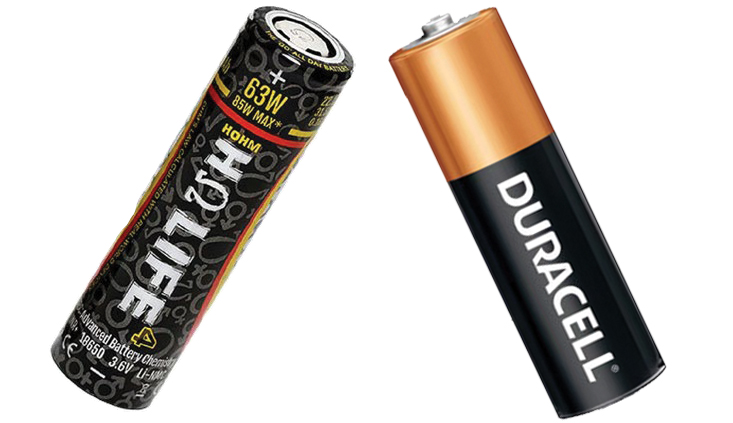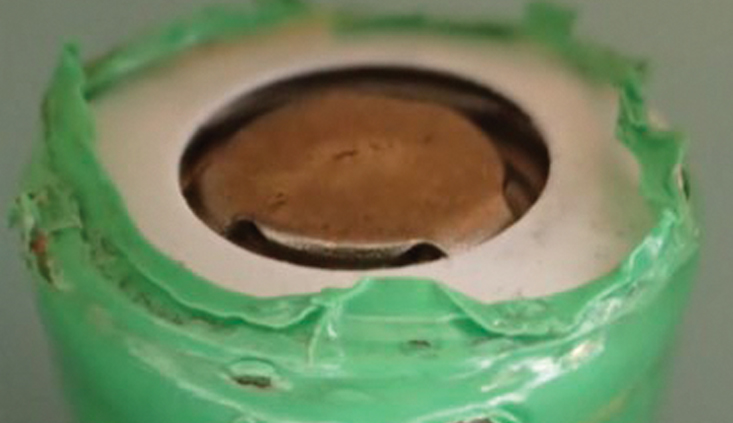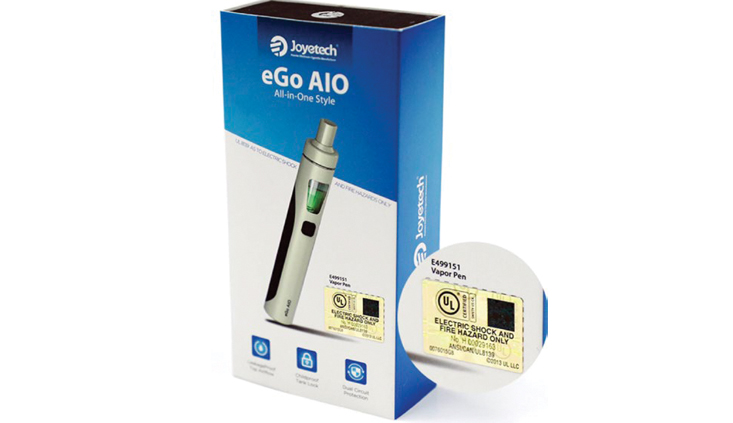Litigating lithium-ion battery explosions
A look at Li-ion products-liability cases, focusing on establishing personal jurisdiction and proving battery defects
Lithium ion (Li-ion) batteries are increasingly used in consumer products. As of 2022, Li-ion batteries dominated with approximately 40.77% of the global battery market revenue according to Grand View Research. They are projected to register a compound annual growth rate of 20.3% from 2024 to 2030. Li-ion batteries are commonly used in electric vehicles, consumer electronics, power tools, and medical devices. They provide higher energy density and efficiency compared to alkaline batteries and are uniquely positioned to overtake a growing electronic consumer market, in no small part because of their rechargeability and longevity. However, this intense increase in energy potential comes with a significant increased risk of thermal runaway: A dangerous chain reaction where the battery’s temperature rises uncontrollably, causing internal reactions that release even more heat, creating a self-sustaining cycle and leading to potential fires or explosion.
While properly designed and manufactured, Li-ion batteries are generally consumer-safe. Cursory research, however, reveals a wealth of articles and news stories discussing the growing epidemic of Li-ion battery explosions throughout the United States. For example, explosions involving e-bikes and similar devices in New York City killed nine people, caused 92 fires, and injured 64 people just between January and June of 2023. California has been experiencing a similarly strong uptick in Li-ion explosions over the past three years. In March 2024, the San Diego Fire-Rescue Department reported 32 fires linked to Li-ion batteries. In 2022, the San Francisco Fire Department reported 60 fires caused by Li-ion batteries, including one death. In May 2023, a Li-ion battery fire injured five residents of a San Francisco high-rise, which spawned a city ordinance related to the charging of e-scooters.
A different beast
The Li-ion batteries of today are a different beast from the alkaline batteries many of us were accustomed to putting in our walkie talkies and boomboxes as children. They may appear similar, but are structurally distinct.
The Li-ion battery will generally have higher upfront costs, a six-fold increase in lifespan, performs in more extreme temperatures, can hold power for decades in storage, and weighs about 1/3 less than its alkaline cousin. Its exceedingly higher energy density translates to a higher risk of harm when improperly designed, manufactured, or used.
As personal-injury cases arising from these Li-ion battery explosions continue to increase, this article provides a brief overview of the important considerations for litigators to have when taking them on. First, the article will discuss key points to consider when trying to establish personal jurisdiction over foreign companies. Second, it will provide an introduction to some of the technical fundamentals related to Li-ion battery products. Third, it will address ways to evaluate industry standards for proving the defect under strict liability and negligence theories. Finally, it will highlight a major focus of defendants in these cases: consumer misuse.
Establishing the court’s personal jurisdiction over foreign defendants
Identifying foreign companies as potential defendants
Most of us are familiar enough with the principles of strict products liability, and the joint and several liability of entities downstream of a product’s defect that causes harm. The most easily identified defendant will often be the retail store that sells the product to the end-consumer, or the manufacturer whose logo is printed on the product itself. However, these retail entities may be inadequately insured or have insufficient assets to cover the damages suffered. Additionally, the alleged manufacturer on the box may prove fraudulent upon closer inspection.
Li-ion batteries in consumer markets are usually wrapped or boxed with either the manufacturer’s information or a re-wrapper/distributor’s information. It is well-known throughout this industry that certain companies, known as “re-wrappers,” will purchase Li-ion batteries or power cells from major manufacturers (e.g., Samsung, LG, Panasonic) and repurpose the cells for an unintended use, removing the original wrapper and affixing their own without significant design changes. This creates a litany of problems.
A prudent litigator in this space will not accept initial representations of the manufacturer’s identity from the retailer or the re-wrapper. Expert inspection and investigation will often be necessary. Symbols and designs unique to particular companies may not be readily known until the cell is placed in a CT scan or destructively tested by your expert.
In a recent case of mine, an 18650 Li-ion power cell was wrapped and sold to a small vape shop in Riverside County by a company named Hohm Tech. The image on the left in Figure 1 is one of their wrapped 18650 “batteries.” Our expert inspected the cell and noticed symbols and insignias unique to Samsung. Our expert testified that she has personally seen over 10 examples of Hohm Tech wrappers placed on Samsung-manufactured 18650 Li-ion cells. In cases like this, the original manufacturer (e.g., Samsung) may not bear liability, or even be subject to the personal jurisdiction of the court, for the reasons discussed below.
Establishing ‘minimum contacts’ over foreign entities
If a manufacturer, distributor, or retailer is a foreign company, then gaining personal jurisdiction can be a complicated process, worthy of its own separate article to fully explore. However, a few observations are worth making here.
California’s long-arm statute in Code of Civil Procedure section 410.10 broadly allows state courts to “exercise jurisdiction not inconsistent with the Constitution of this state or the United States.” Thus, litigants must look to the Due Process Clause as interpreted by the U.S. Supreme Court to define the boundaries of the state court’s personal jurisdiction over foreign entities. “[A State] does not exceed its powers under the Due Process Clause if it asserts personal jurisdiction over a corporation that delivers its products into the stream of commerce with the expectation that they will be purchased by consumers in the forum State.” (World-Wide Volkswagen Corp. v. Woodson (1980) 444 U.S. 286, 297-98.)
“A state court may exercise general jurisdiction only when a defendant is ‘essentially at home’ in the State,” over “any and all claims brought against a defendant.” (Ford Motor Co. v. Montana Eighth Judicial Dist. Court (“Ford Motor”) (2021) 592 U.S. 351, 352.) Specific jurisdiction is different and can be exerted over a defendant only in a particular case, where there are minimum contacts through purposeful availment of the privileges afforded by the State from conducting activities within the forum state, so long as that purposeful availment is sufficiently related to the claim and the assertion of personal jurisdiction would comport with fair play and substantial justice. (See id. at 359; Pavlovich v. Superior Court (2002) 29 Cal.4th 262, 269.)
The specific jurisdictional analysis is “intensely fact-specific.” (Rivelli v. Hemm (2021) 67 Cal.App.5th 380, 391.) Both the United States Supreme Court and California Supreme Court have cautioned that the “‘minimum contacts’ test . . . is not susceptible of mechanical application; rather, the facts of each case must be weighted to determine whether the requisite ‘affiliating circumstances’ are present.” (Kulko v. Superior Court of California (1978) 436 U.S. 84, 92; Pavlovich v. Superior Court (2002) 29 Cal.4th 262, 268.)
LG Chem Ltd. v. Superior Court (2022) 80 Cal.App.5th 348 is applicable to this analysis. The underlying action in LG Chem Ltd. reflects a common fact pattern. Removable single-cell 18650 Li-ion power cells are generally not suitable for individual consumer sale, purchase, or use. Instead, they are designed for commercial battery-pack manufacturers to include in a broader battery-pack assembly. Virtually all the largest 18650 power cell manufacturers (e.g., LG, Samsung, Panasonic, Sony) expressly disavow sale of the product to individual consumers.
Nonetheless, re-wrappers will purchase these 18650 batteries or power cells from the major manufacturers (sometimes professing to be battery-pack manufacturers) and re-purpose them for sale to individual consumers by simply placing their own fraudulent wrapper on the outside. When these power cells explode and injure the consumer, the original manufacturer may file a demurrer for lack of personal jurisdiction.
In LG Chem Ltd., the plaintiff filed a products-liability claim after suffering injury when an 18650 Li-ion power cell purchased for his vaping device exploded and caused him severe burns. The power cell was originally manufactured by LG Chem, and LG Chem filed a motion to quash service of summons for lack of personal jurisdiction. The trial court denied the motion, but the Court of Appeal vacated the trial court’s order and granted the petitioner’s request to direct the trial court to enter an order granting the motion. While the Court of Appeal found sufficient evidence of purposeful availment, where LG Chem directly sold high volumes of 18650 power cells to California companies, it found a lack of relatedness to the claim because those sales were made only to the electric-vehicle industry for use in electric vehicles, and LG Chem never designed or intended any of its power cells to be manufactured, distributed, advertised, or sold for sale to or use by individual consumers as standalone, replaceable batteries. The “undisputed facts” in that case established that LG Chem “did not advertise, market or solicit buyers for its 18650 batteries” and LG Chem “did nothing in California to ‘urge,’ ‘foster,’ or ‘encourage’ California consumers like [plaintiff] to buy, or use, individual 18650 batteries as standalone replacements in consumer products.” (Id. at 367; but cf. Kothawala v. Whole Leaf, LLC (2023) 217 N.E.3d 1202 [applying the same test and finding LG Chem did satisfy the minimum contacts test].) Therefore, it will be particularly important in similar cases to establish sufficient jurisdictional facts that the foreign company at issue cultivated or systematically served a market for the product in the forum state related to the claims at issue.
Service of process on foreign companies
Service of process on foreign companies can be a slippery procedure. If the defendant is a resident of a signatory to the Hague Service Convention, then the plaintiff must serve process on the defendant in compliance with the Convention or must show why the Convention does not apply. (Rockefeller Tech. Invs. (Asia) VII v. Changzhou SinoType Tech. Co., Ltd. (2020) 9 Cal.5th 125, 138.) This can take several forms; however, the most general checklist under such circumstances would look like:
Confirm the defendant’s locationCheck local laws concerning reservations or added requirements (e.g., translation of documents to forum state language) for serviceComplete the Hague Convention Request Forms (USM-94)Submit to proper Central Authority in the relevant jurisdiction
Be prepared for service to take several months. There are various routes for proper service depending on the foreign jurisdiction, but it is well worth a litigant’s time to evaluate that issue as early as possible.
Li-ion batteries and cells
A common misconception is that the positive and negative electrodes on a cylindrical battery are always on opposite ends of the device. This is not ordinarily true within the structure of the cell. The Li-ion power cell is designed through a winding or jelly roll structure with the positive and negative electrodes thinly separated. Even when fully encased in metal, the only separation between the positive and negative is a plastic seal placed on top. The sides and bottom of these cells is usually a single conductive metal shell, which forms the negative electrode. The positive cathode tip on top is millimeters from its negative anode on the side. Accordingly, when the thin plastic wrapper around the cell wears as a result of repeated use or misuse, it becomes easy to close the circuit with simple conductive materials (e.g., keys, coins).
However, this alone should not explain why a battery experiences thermal runaway. To understand this, it is helpful to recognize the technical difference between a “battery” and a “cell.” The terms are often used interchangeably, even by experts, until it becomes important to differentiate between the two. In engineering literature, the two terms are distinct. A cell is the basic functional electrochemical unit containing an electrode assembly, electrolyte, separators, container, and terminals. It is a source of electrical energy by direct conversion of chemical energy. A battery is the assembly of a single cell, or multiple cells, ready for use as a source of electrical energy. A battery, unlike a cell, may incorporate protective devices, battery management controls, charging circuits, and monitoring circuitry.
In other words, batteries are expected to contain safety controls that cells are not. For this reason, consumers should not be removing or handling cells independent of the protective assembly housing them. Products requiring removable and replaceable Li-ion power cells (while calling them batteries) are patently defective in design, but available throughout the consumer marketplace. This is likely what happened in LG Chem as this problem is particularly pronounced in the context of e-cigarette devices. Li-ion batteries should have adequate protective mechanisms to prevent thermal runaway when foreseeably used or misused by consumers.
Some of the most important protective features are the:
Current Interrupt Device (CID)Protection Circuit Board (PCB)Positive Temperature Coefficient (PTC) Switch
The CID responds to excessive pressure by disconnecting electrical connection within the cell. The PCB integrates multiple protective functions into a single system (e.g., overcharge protection, over-discharge protection, short circuit protection, overcurrent protection). The PTC switch increases resistance as temperature rises, reducing current flow and preventing overheating. A battery with all three safety mechanisms in place, properly designed and installed, substantially mitigates the risk of thermal runaway events.
It is for this reason, that most consumer-facing Li-ion batteries come as part of a battery pack, incorporating Li-ion cells into a larger assembly with protective measures. For example, most power tools will come with a battery pack, designed so that the consumer cannot remove or handle the individual power cells inside. Similarly, whether an e-bike battery pack with 65 cells or a Tesla Model Y battery pack with 4,680 cells, Li-ion batteries in consumer markets are generally contained within a broader assembly that your expert will need to analyze to ensure the product complies with industry standards in design and manufacture.
Industry standards for proving Li-ion battery defects
Establishing violations of industry standards is almost always probative of liability. Under the consumer expectations test, reasonable consumers have come to expect Li-ion products to behave consistently with products that follow those industry standards. Under the risk-benefit test, industry safety standards establish a broad consensus that compliant safety measures are not only feasible at the time of manufacture but are to be expected of prudent manufacturers in light of the gravity of potential harm resulting from the foreseeable use of the product.
In a negligence cause of action, industry safety standards can establish how a manufacturer exercising reasonable care would design and manufacture their product; but it also puts the manufacturer, and every company downstream of the defect, on notice that the product may pose an unreasonable risk of harm when foreseeably used by consumers.
Given the relative nascency of the Li-ion battery’s ubiquitousness, federal and state regulations specific to the manufacture and sale of Li-ion batteries are anemic in comparison to their popularity and the risk of harm they pose. Instead of active regulation, federal and state agencies have generally taken the course of collaboration with industry groups to develop guidelines and standards. What limited regulation exists, tends to focus on mandated testing and document preservation, including:
IEC 62133: Tests for chemical and electrical hazardsUN/DOT 38.3: Tests for eight transportation hazardsEC 62619: Tests the safety of Li-ion batteries in industrial equipment (e.g., automated guided vehicles; forklifts; railways; and marine use) and electronicsUL 1642: Tests the safety of lithium- ion batteries that are used to power electronic productsUL 2580: Tests lithium-ion batteries used in cars
The Code of Federal Regulations (49 CFR § 173.185) requires Li-ion batteries to abide by all the criteria established in the UN Manual of Tests and Criteria to be approved for sale and use. These tests include tension testing, flashpoint testing, flow rates testing, and metallic materials testing. Manufacturers are required to maintain clear records of all test completions. However, the actual oversight of this is mild.
There are several federal agencies that put out “guidance papers” pertaining to Li-ion products. The primary three agencies doing this are the Consumer Protection Safety Commission (CPSC), Department of Transportation (DOT), and (in the context of use in medical devices) the Food and Drug Administration (FDA). These guidance papers may define some standards to be followed within the industry concerning the manufacture and sale of Li-ion batteries. However, they tend to crystallize already emergent industry standards defined by prevailing global safety certification companies, such as UL Solutions (UL), previously Underwriters Laboratories, and the International Electrotechnical Commission (IEC).
The primary industry standards from which your expert will begin a technical product defect-analysis will likely be the UL standards. These standards are widely recognized and used to ensure that products, systems, and components meet specific safety, performance, and reliability criteria. UL standards are critical safety and performance benchmarks that products, including Li-ion batteries, must meet to minimize risks such as fire, electric shock, and mechanical failure. These standards are recognized globally and require products to undergo rigorous testing and certification to ensure they comply with stringent safety requirements. They provide a clear measure of whether a product has met established minimum safety criteria. A product that fails to meet UL standards or is found to be non-compliant could be a key factor in proving negligence or defectiveness in a liability case, particularly if the product caused harm due to issues like overheating, fires, or explosions.
Some important UL standards commonly applicable in Li-ion cases include UL 1642, UL 2054, UL 94, UL 1449, and UL 8139. Products that have been certified by UL will usually bear the UL certification on the packaging, such as shown in Figure 2.
Avoiding “misuse” arguments
One of the primary defenses to liability defendants will rely on is “plaintiff misuse.” The consumer expectation test steadily imposes liability on the defendant for a defective product even where the unreasonable risk of harm only exists in the presence of foreseeable misuse. (CACI No. 1203.) Nonetheless, misuse of the product may factor into comparative fault and reduce the plaintiff’s recovery in proportion. Defendants will undoubtedly focus on all of the perfunctory fine-print warnings that often provide overly broad and ambiguous safety advice. For instance, some of the most common “misuse” arguments that companies warn users on include:
Avoid overchargingPrevent physical damageDo not use damaged batteriesAvoid high temperaturesProperly store the batteries (cool, dry place)Use the correct chargerDo not mix batteriesAvoid water exposureDo not disassembleMonitor for signs of aging
A warnings expert can certainly be used to assess the underlying adequacy of the warnings themselves. However, it might be a prudent idea to highlight through a human-factors or warnings expert the importance of taking the first steps to engineer out the hazards latent within the product. Thus, before ever getting to the question of warnings, no product should be sent into the consumer marketplace with warnings, when the company could have removed, replaced, or isolated the hazards. It is only when it is not reasonable to engineer around these hazards that companies may utilize and rely on warnings.
At the outset of any battery-explosion case, it is critical to walk through with your client the specific details of how the batteries were handled, maintained, preserved, charged, and utilized. You will have to evaluate these behaviors relative to the warnings provided to them.
Conclusion
Personal-injury lawyers will, once again, be the vanguards of our safety for these products over the foreseeable future. In light of deficient regulation by federal and state agencies, this ever-growing Wild-West consumer marketplace of Li-ion products will likely continue to increase, as will the cases of injury, property damage, and death. Becoming familiar with the experts in this field and the technical standards that define it will behoove any personal injury practice interested in staying ahead of a steepening curve.
Austin G. Ward

Austin G. Ward is a senior trial lawyer with Adamson Ahdoot, LLP. Austin is a former prosecutor with the Ventura County District Attorney’s Office and has represented plaintiffs in catastrophic injury and wrongful death cases in California state and federal courts for over six years. He graduated cum laude from Pepperdine University School of Law in 2014.
Copyright ©
2025
by the author.
For reprint permission, contact the publisher: Advocate Magazine



